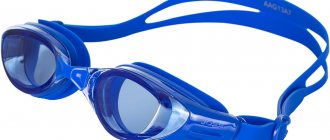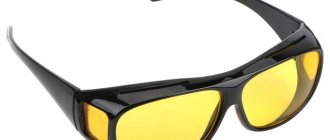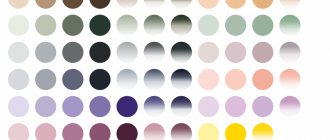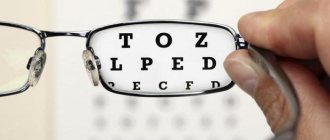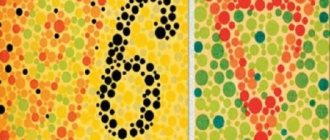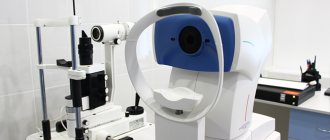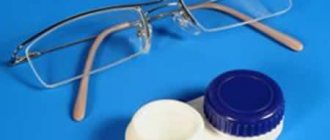In the article brought to the attention of readers, we will consider the dangers of night driving and give recommendations to motorists regarding the selection of spectacle lenses and glasses for safer driving in the dark.
- Briefly about the perception of light
- Risk factors for night driving
- Lenses for driving at night
- Limited use of tinted lenses
- Tips for safe driving at night
Driving at night poses a serious risk, especially on poorly lit roads. In conditions of insufficient and variable lighting, the number of road accidents increases significantly. The driver must drive with extreme caution at night, regardless of whether he wears glasses or not. In this article we bring to the attention of readers, we will look at the dangers of night driving and give recommendations to motorists regarding the selection of eyeglass lenses for safer driving.
How do driving glasses work?
The main purpose of these glasses is to protect your eyes from sunlight or the glare of headlights from oncoming cars. To solve this problem, glasses lenses are made with a special anti-reflective and polarizing filter.
Most often, glasses intended for driving a car are yellow, red and orange. The filters installed in the lenses lead to the absorption of the blue-violet spectrum.
Experts believe that it is this spectrum that prevents the driver from focusing on an object. The lenses reduce the degree of dazzle of the driver by the headlights of oncoming cars, especially if they have xenon headlights.
Modern technologies allow the use of two technologies at once in glasses for night driving:
- anti-glare layer;
- polarizing filter.
The purpose of the anti-reflective coating is to improve image clarity and increase contrast. The image appears cleaner.
A polarizing filter does not allow reflected glare to pass through, filters out the splitting of objects, and reduces the halos surrounding them. The presence of two layers - anti-reflective and polarizing - proved to be most effective when driving in bad weather conditions.
Corrective glasses deserve special attention. These are glasses that have all the properties of glasses for night driving, but at the same time they can correct visual impairments. They are used by patients with myopia and farsightedness. Such accessories must have both a polarizing filter and an anti-reflective coating.
- ➤ Which serums are best to use for eyelash growth?
- ➤ How to wear colored lenses correctly!
The best anti-glare glasses for drivers (anti-headlights)
Driving glasses have one important property - increasing image contrast. Simply put, by wearing glasses against the headlights, you begin to see better, without having to strain your eyes and squint, which leads to headaches and fatigue.
Matsuda MT093
The beneficial properties are due to the use of lenses with unique coatings and filters developed in the largest ophthalmological laboratories in Europe. The lenses protect the eyes in extremely bright lighting conditions due to photochromic and specular effects.
Matsuda MT093
The main advantages of Matsuda anti-headlights are increasing the contrast and clarity of the image in poor visibility conditions (low light, fog, twilight), reducing glare from the headlights of oncoming traffic, eliminating the “double image” effect, glare and halos at night.
Matrix polarized
Chinese MATRIX Polarized glasses are produced using a special filter layer. This layer prevents the perception of horizontal sunlight and exposure to ultraviolet rays.
Matrix polarized
Protects eyes in extremely bright lighting conditions due to photochromic and mirror effects. Matrix drive polarized anti-headlights are recommended for drivers; they increase the contrast and clarity of the image in poor visibility conditions (low light, fog, twilight) and reduce glare from the headlights of oncoming traffic.
Anti-lights Aviator
The Antifar frame is made of durable plastic, and the lenses are made of glass. Made in one of the most popular shapes that are suitable for both men and women - the famous “aviators”. The glasses themselves were developed in Russia under the leadership of ophthalmic surgeon Svyatoslav Nikolaevich Fedorov and have a certificate of conformity.
Anti-lights Aviator
They improve visibility when driving in difficult weather conditions (fog, cloudy weather, twilight) by increasing image contrast, and block harmful UV radiation. These glasses help the driver concentrate on the road and relieve eye strain.
Basic criteria for choosing glasses for driving at night
Choosing driving glasses is a serious procedure. The final quality of driving depends on how comfortable the driver is with glasses.
The accessory should not slide or put pressure on the bridge of the nose or cause a feeling of discomfort.
Therefore, when choosing glasses, you should adhere to a number of rules:
- Comfort. The main indicator of the right choice is how comfortable the driver is in the new glasses. Glasses should not press on your temples, slide off your nose, or cause negative sensations. Their planting is one of the main selection criteria. It is important to try on several models, tilt your head in them, and turn your face in different directions several times. If the glasses sit firmly in place, they are suitable.
- Frame. The choice of frame is a separate issue. It is completely subjective and depends on personal preference, face shape and other factors. It is important that it opens up the viewing angle as much as possible, is lightweight and has comfortable temples.
- Correct nose pad. For driver's glasses, the tips of the nosepieces are made of high-quality rubber. This is necessary to avoid the accessory sliding onto the bridge of the nose.
- Place of attachment and size of temples. Real driving glasses have mounts at the top or bottom of the frame. They cannot be centered. This feature is caused by the need to expand the viewing angle. The earhooks themselves should be large and reliable. Their thickness is usually about 6 mm. The material for the temples, as well as for the nose pads, is modern rubber.
- Availability of complete information about the technological features of night glasses for the driver. Knowing the differences between technologies and the features of different models will allow you to choose not only a convenient, but also a reliable accessory, and not an advertised new product.
If you rely on this algorithm for choosing night glasses, the result obtained will be not only convenient, but also of high quality. It will comply with the golden rule: price-quality ratio.
Driving glasses
Road safety largely depends on the quality of the driver's vision. Special car glasses ensure comfortable and safe driving in any weather. If the driver's vision is good, then sunglasses serve as car glasses. If there are any visual impairments - myopia, farsightedness, astigmatism - then you need glasses with diopters.
Frame requirements
Let's start with the shape of the glasses: peripheral vision is very important for the driver - the so-called side vision - so it is better to choose a frame with thin temples that are attached not to the middle, but to the top or bottom of the frame. Light openings should not be narrow - they will limit the field of view from the temporal side. Ideal in this case is the sporty “elongated” design of the glasses. The frame should be as comfortable as possible, not move out, and not put pressure on the temples and bridge of the nose.
Car glasses should only have plastic lenses; glass ones can cause serious injuries in an emergency.
Sun protection and polarization
As for sunglasses, preference should be given to sunglasses with polarized lenses. Ordinary sunglasses do not protect the driver from blinding glare that occurs when sunlight is reflected from horizontal surfaces - wet asphalt, snow, oncoming cars, water surface. Sunglasses with a polarizing effect block glare and blurry images as much as possible, which interfere with driving and cause fatigue and irritation of the eyes. Glasses with polarized lenses are recommended for driving during daylight hours.
If you use glasses to correct your vision, you can also use polarized glasses with corrective lenses while driving. To do this, you need to install polarized lenses with the required diopters in your frame. But in the dark, driving a car in polarized glasses is undesirable - due to the low light transmission of the lenses.
Photochromic driving glasses
Sunglasses with polarized lenses, like regular sunglasses, always have the same degree of darkness in different lighting conditions - they will be equally dark in the sun, at dusk, and indoors. If you wear glasses regularly, then a convenient option is glasses with photochromic lenses, which darken in sunlight to varying degrees depending on the light level - they are dark in bright sun, become clearer in cloudy weather, and look like regular glasses indoors or have a slight degree of tint. Previously, photochromic glasses “did not work” in a car, since they darken under the influence of ultraviolet rays from the sun, which practically do not enter the car’s interior. Recently, some companies have begun to produce photochromic lenses, which darken behind the windshield of a car when exposed to short-wave blue rays of the solar spectrum penetrating inside the cabin; there are also photochromes with a polarizing effect.
The assortment of Glasses for You salons includes Transitions XTRActive photochromic spectacle lenses, manufactured at the ODV Prescription Optics Plant, which darken the car interior in sunny weather by 50% and remain transparent at night and indoors. The darkening of such lenses outside the car in sunny weather reaches 70-80%. But such a lens does not protect the eye from glare reflected from horizontal surfaces.
This drawback is overcome by a photochromic lens with a polarizing effect, DriveWear, also available in the range of our salons.
DriveWear Lenses:
- Dimmable outdoors up to 88%, in addition to 100% UV protection, they have a polarizing, anti-glare effect.
- They darken the car up to 78%, help in judging distances and reduce fatigue during long-term driving.
- When not activated, they provide a contrasting effect for cloudy weather and make colors more saturated.
Corrective glasses
If you do not use sunglasses when driving and wear regular corrective glasses, then the lenses in your glasses must have an anti-reflective (anti-reflective, anti-reflex) coating, which increases image contrast, reduces glare from the headlights of oncoming cars, street lights, wet roads, etc. especially important when driving at night.
If you have presbyopia (age-related farsightedness) and you wear glasses with progressive lenses that allow you to clearly see the road, the dashboard, and navigator readings, choose Progressive Drive progressive lenses, also available in the assortment of salons and having the widest possible distance zone, free from limited peripheral vision that can become dangerous.
The ODV prescription optics plant produces corrective spectacle lenses of various designs (monofocal, progressive, etc.) from any materials, be it photochromic, polarized or photochromic lenses with polarization.
Whatever glasses you choose, they should provide high quality vision at any time of the day and in any weather conditions!
How polarized glasses work
The main feature of safety glasses is the polarizing effect. Its task is to protect the eyes from bright glare and reflected light. Polarized glasses have proven themselves well during daylight hours and for protection from oncoming headlights in the dark.
Unlike ordinary sunglasses, they have a special multi-layer filter design. Thanks to the filter, the light beam is divided.
Radiation with vertical polarization that is safe for the eyes is passed through, and the rest is cut off. Thus, a person sees only unpolarized rays of light coming from objects.
This effect contributes to the formation of a clear picture. Typically, the range of polarized glasses is about 20 meters.
Glasses with polarizing filters are widely used by drivers during the day and at night, among athletes and fishermen. Their advantages include:
- decreased tension in the optic nerve;
- improving image quality;
- minimizing emergency situations due to increased image clarity;
- increasing image contrast;
- UV protection.
Most models, regardless of the manufacturer, have a 100% degree of polarization. The main differences between the models relate to the quality of the lenses, the material used, the weight of the lens, and the protection of the glass from abrasive effects.
- ➤ How to properly glue false eyelashes and how to care for them?
- ➤ True or false, the Healthyeyes eye massager improves the condition of the skin around the eyes!
The best Cafa France accessories and anti-lights
Cafa France driving glasses are one of the most popular models. They performed well when driving at twilight, in bright sunlight, wet asphalt, and blinding light from oncoming cars.
For the manufacture of cafa france lenses, high-quality plastic or mineral glass with a filter applied to them is used. The purpose of the coating is to create polarization oscillations. This allows for improved image quality and reduced eye strain.
Among the advantages of cafa france glasses are:
- image improvement in foggy weather, twilight or other precipitation;
- reducing the brightness of glare from oncoming traffic;
- reduction of eye fatigue.
Anti-headlight glasses are a specialized accessory designed for driving a car in the dark. They enhance the final image, protect the eyes from bright light and reflected glare.
Most often, anti-headlights are found with yellow lenses. They are often darkened at the bottom.
The operating principle of this model is to exclude the blue color spectrum. As a result, the blue halo around objects disappears. They become clearer.
Among the advantages of anti-headlights are:
- UV protection;
- creating a solar effect in the dark;
- reduced glare and reduced blindness;
- reducing the degree of glare from oncoming traffic;
- high efficiency in poor visibility conditions (fog, rain, twilight);
- reducing eye strain.
Cafa France glasses and anti-headlights are similar in their basic properties, but the former are distinguished by a wider range of applications and more modern manufacturing technologies.
User voting
Which driver glasses would you choose or recommend?
Lectio Risus Grand Voyage
9.38 % ( 3 )
Polaroid Core P4039-A4X68HE
6.25 % ( 2 )
Cafa France (S008319)
18.75 % ( 6 )
VEITHDIA design
12.50 % ( 4 )
Matsuda
15.63 % ( 5 )
CRISLI Drive
0.00 % ( 0 )
Mystery 0113
0.00 % ( 0 )
Auto Premium SUN DRIVE 17002
6.25 % ( 2 )
Polarized 3007 C1
15.63 % ( 5 )
EyeDrive Transitions XTRActive lenses
6.25 % ( 2 )
Rules for choosing frames for your face shape
Glasses designed for driving at night are distinguished by their versatility. They do not have a very wide variety of frames and are great for both female and male faces.
Despite certain restrictions in the choice, you should give preference to models that suit your face shape.
These glasses are divided into:
- round;
- oval;
- in the form of drops;
- rectangular.
By design, it can be distinguished as a full rim or half of it.
- For a classic face with the correct oval shape, you can use any type of frame. Aviator glasses will look impressive.
- If the driver has a round face, then it is better to take square or rectangular frames. The arms should be wide. You can look at models with a pointed shape at the temples. The sharp tip of the frame visually elongates the face.
- Drivers with a triangular face should not try square and rectangular shapes. Frames with a cat eye shape or retro style will look best.
- If the driver has a square face, then large round glasses will look ideal. The frame is preferably dark or bright.
User reviews
Buyers have different opinions about glasses designed for driving at night. Some people approve of them and consider them an indispensable device that allows them to effectively eliminate glare and glare from high-beam headlights at night. Negative buyers argue that these glasses not only do not provide benefits, but can also be unsafe, since the tinted lenses reduce contrast and create a blurred vision of objects, as a result of which you may not see an obstacle or a moving pedestrian.
Choosing good lenses
Selecting lenses is a serious matter. Driving safety and driver clarity at night depend on it. Most lenses are polarized. It is necessary to reflect glare from horizontal surfaces. For example, reflected light from snow and ice, wet asphalt.
Also, lenses for night glasses have a filter that prevents the violet-blue part of the spectrum from passing through. Thanks to this, there is better concentration of the gaze on objects. Night glasses lenses are most often found in yellow, orange or red.
All eyeglass lenses vary in the type of material used to make them. It can be plastic or glass.
Lenses can be regular or thin. It is best to give preference to plastic, it is lighter and safer.
When choosing lenses, you should adhere to a number of rules.
- Choose a color scheme. The color range can vary from yellow to light brown. Such lenses are considered more comfortable and safe. Yellow lenses cause less eye fatigue, and the final image is clearer. When choosing, you should give preference to warm shades, as they disturb the natural colors to a lesser extent.
- In cases where night glasses are intended to be used in daylight, the correct degree of protection against ultraviolet rays should be selected. The protection factor should be UV380 - UV400.
- High-quality glasses, according to modern standards, must be light-transmitting. The indicator must be at least 75%.
- Verified manufacturers. You should not purchase products from unknown brands. It is better to take those manufacturers who have proven themselves in the market.
When purchasing glasses for driving in the dark with polarized coating, it is recommended to test them yourself to assess the quality of the lenses:
- If the glasses are placed in a horizontal position near the monitor, then turned so that they take a vertical position, the glasses become dark.
- For the second experiment, two pairs of glasses are used. The first pair should be put on, the second pair should be turned 90 degrees in your hands. The glass, as in the first case, should darken. This confirms the presence of a polarization layer.
- If you look at display windows with night driving glasses on where objects are reflected, they should become completely transparent. All reflections are cut off.
Driver points rating
Our team considered time-tested manufacturing companies. Experienced car owners and drivers with extensive driving experience took part in the selection of nominees. It was their knowledge that weeded out goods of dubious quality. Next, we assessed the remaining ones for a number of characteristics:
- Type of glasses;
- Glass color;
- Materials;
- Additional anti-glare coating;
- Level of protection against UV rays;
- Level of light transmittance, tinting;
- Glass size, viewing angle;
- Lightweight, strong support;
- Correct fastening of the earhooks;
- Price, performance.
The result of the comparative analysis was a top list of 8 positions. For convenience, we have divided it into 3 categories - these are anti-glare, polarized models, and anti-headlight glasses. Reviews from customers and owners determined what strengths and weaknesses each product has.
Indications for wearing in the dark
Glasses for night driving are necessary for almost every driver. This is due to the fact that in the dark, visual acuity decreases. Particular attention to this issue should be paid to those who have vision problems. Night driving glasses come with diopters. This allows not only to minimize discomfort when driving, but also to eliminate visual impairment.
Glasses for driving in the dark should be used by drivers who experience increased eye fatigue, who are strongly blinded by the light of oncoming traffic, reflected glare from wet asphalt, reflections from snow or other objects.
These glasses are recommended to be used to exclude the “Scandinavian syndrome”. This syndrome occurs when most of the day is dark. Gray shades lead to a depressed feeling and tired eyes. The effect of the sun in glasses with yellow lenses can reduce depression, lift your mood, and reduce eye strain.
Some older drivers develop a peculiarity - age-related farsightedness. In such a situation, they need to use special corrective glasses. They will have an anti-reflex and anti-glare effect. This will reduce the contrast of objects and partially remove glare.
Modern manufacturers provide drivers with vision problems with special overlays for regular glasses. They will create the necessary effect of protection from oncoming headlights and bright light. The pads are put on as needed and removed when the ride is finished.
Types of driving glasses
The main purpose of optics is safe and comfortable driving in any weather. There are no universal driving glasses - depending on the degree of lighting and time of day, you need to wear one or another pair.
Based on functionality, optics can be divided into the following groups:
Sun protection and polarized
The polarizing effect helps guarantee the driver a comfortable and safe ride, as it almost completely neutralizes glare and blurry images, which not only prevent full control of the vehicle, but also quietly tire a person’s eyes, impairing his vision. For evening driving you need to choose glasses with yellow lenses, for daytime - brown lenses.
Photochromic
This variety provides dimming equal to the light intensity and brightness. In bright sunshine and no clouds, the lenses are dark brown, almost black. As the surroundings get darker and the brightness decreases, the lenses become lighter. A big plus and the main difference from “chameleons” is instant lightening, for example, when entering a tunnel.
Corrective
To put it simply, glasses are for those who have vision problems - myopia or farsightedness. Such lenses are coated with a special antireflective coating that has an anti-reflex and anti-reflective effect.
It is recommended to give preference to options with the widest visibility corridor, because it is necessary to improve all aspects of vision without depressing peripheral vision.
Contraindications for use
Driving glasses are varied. These can be models of yellow, brown, pink, gray glass. They can be daytime or nighttime mixed use.
Due to the diversity of the model range and wide range of uses, they have virtually no contraindications. Despite this, people with vision problems (astigmatism) should use glasses designed for driving at night after consultation with their doctor. In this case, you should choose a model based on individual characteristics.
These glasses are contraindicated for those who have color perception disorders. Night driving glasses work by filtering a certain part of the light spectrum, so they can aggravate the situation and cause discomfort.
Do they affect the quality of vision?
Experts say that polarized glasses help improve vision. This is due to the fact that they have a special filter. As light passes through the lens, the glare is scattered. The result is a sharper final image. The viewing characteristics are improved.
A layer is applied to the central part of the lenses, which helps to dull the light and its subsequent dispersion. Thanks to this, the functional state of the cells of the eye tissues is restored. Their ability to perceive light improves, and the aging process slows down.
Relieving eye strain also contributes to a faster restoration of their functions. Consequently, after a long ride, the eyes wearing glasses will receive less strain.
Varieties with yellow lenses at night
Yellow lenses for night glasses are the best according to most drivers. There is a misconception that to make them it is enough to paint the glass in yellow shades. Some companies producing yellow flowers use a filter with a narrow bandwidth.
Their main task is to pass the yellow component. This feature of the lenses makes all objects yellow in human perception. Only their shade differs. They can be lighter or darker. But the result is serious color loss.
It is impossible to drive a car wearing such glasses. In the second option, the color blending method is used to obtain yellow lenses. A layer is applied to the lens that reflects the blue color spectrum. As a result, the final image is yellow.
Yellow lenses can significantly improve the clarity of the visible image. They showed the greatest effect in weather when the light spectrum is shifted towards blue tones.
Thanks to modern filters, the driver’s color perception changes. The blue-green component is partially reduced. The result is improved driving comfort. Another advantage of yellow lenses is protection from oncoming traffic. This occurs due to the absorption of the blue spectrum and reflection of the yellow spectrum.
Despite the advantages of yellow lenses, it is not recommended to wear them constantly. This is due to changes in color and spatial sensations. The consequences are especially aggravated in the case of a dirty windshield.
The best glasses for driving day and night polarized
When a person sits behind the wheel both at night and during the day, then it is worth buying two models of glasses. Then this will help avoid visual fatigue. A comfortable frame and properly selected lenses will provide excellent protection against glare and accidents.
Cafa France Royal Series
The Taiwanese company Cafa France makes good polarized glasses. It’s better to immediately buy 2 pairs – one with yellow lenses for night driving, and one with brown lenses for daytime driving.
Optics for daylight hours (gray and brown) give a very good picture, it eats up glare, the dashboard is not reflected in the glass, in general everything is as it should be when using real Cafe France polarized glasses!
Cafa France S11125
Yellow lenses are not as effective as brown ones - they eat up a little light from the headlights of oncoming cars, lighten the image a little, but they don’t change anything dramatically.
Polaroid
Almost synonymous with quality and benefits for drivers. Japanese polarized Polaroid driving glasses are presented in the 2021 CORE collection. There are classic aviators, practical glasses for drivers, and models for young people.
Polaroid
The collection has a lot of unisex models that are suitable for both women and men. The Ultrasight IX lens, combined with fashionable plastic frames, provides high contrast, anti-glare effect, protection from the sun and suppression of bright headlights.
VEITHDIA
High-quality, heated metal arms, their smooth movement, no backlash. The surface of the glass (plastic, of course) is smooth, without defects. The set is the most complete - the glasses themselves, a case, wiping, polarization check.
VEITHDIA
Excellent glasses in rich packaging of average quality, at a relatively affordable price. Very high-quality casting, good polarization, nose pads bend without cracking, even the design of the temples is thought out. More suitable for thin faces.


